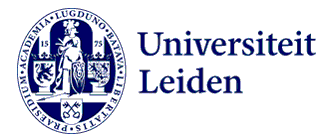Kegiatan dan Pemanfaatan Satwa Buruan di Kampung Yembikeri Distrik Rumberpon Kabupaten Teluk Wondama
Activities and Utilization of Hunted Animal in Yembikeri Village Rumberpon District Teluk Wondama Regency
DOI:
https://doi.org/10.46549/jipvet.v12i1.265Keywords:
bandicoot, Deer, Hunting, Wild boar , Babi hutan, Bandikut, Berburu, RusaAbstract
Abstract
This study aims to determine the level of exploration of animal diversity by the people in the form of hunting and utilization of hunted animals in Yembikeri Village, Rumberpon District, Teluk Wondama Regency. The research was conducted for 2 (two) months and was carried out using a survey technique through interviews with the people of Yembikeri village who carried out hunting activities. The results of this study were that the types of animals obtained were deer, wild boar and bandikut. The hunting method used is a combination of pairs of snares and hunting using bows, spears, machetes and assisted by dogs. Hunting activities are carried out in groups and during the day. Hunting locations in primary forests, grasslands, shrubs and watersheds with a fairly high success rate. The utilization of hunted animals is consumed and sold.
Keywords: Bandicoot; Deer; Hunting; Wild boar
Abstrak
Penelitian ini bertujuan untuk mengetahui sampai sejauh mana eksplorasi keanekaragaman satwa yang dilakukan masyarakat berupa kegiatan berburu dan pemanfaatan hewan buruan di Kampung Yembikeri, Distrik Rumberpon, Kabupaten Teluk Wondama. Penelitian dilakukan selama 2 (dua) bulan dan dilakukan dengan teknik survei melalui wawancara pada masyarakat kampung Yembikeri yang melakukan kegiatan berburu. Hasil penelitian ini adalah bahwa jenis satwa yang diperoleh adalah rusa, babi hutan dan bandikut. Metode berburu yang dilakukan adalah kombinasi pasang jerat dan berburu dengan menggunakan alat busur,tombak, parang dan dibantu anjing. Kegiatan berburu dilakukan berkelompok dan pada siang hari. Lokasi berburu di hutan primer, padang rumput, semak dan daerah aliran sungai dengan tingkat keberhasilan cukup tinggi. Pemanfaatan hasil buruan adalah dikonsumsi dan dijual.
Kata kunci: Babi hutan; Bandikut; Berburu; Rusa
Downloads
References
Andoy EES. 2002. Studi Populasi Rusa Timur (Cervus timorensis) dan Perburuan oleh Penduduk di Desa Poo, Tomer dan Sota dalam Taman Nasional Wasur Merauke. Skripsi. Fakultas Pertanian. Universitas Negeri Papua. Manokwari.
Ariantiningsih, F. 2000. Sistem Perburuan Rusa dan Sikap Masyarakat Terhadap Usaha- Usaha Konservasi Rusa Di Pulau Rumberpon Kecamatan Ransiki Kabupaten Manokwari. Skripsi. Fakultas Pertanian, Universitas Cenderawasih. Manokwari.
Iyai DA, Sada Y, Koibur JF, Bauw A, Worabay M, Wajo MJ, Pakage S dan Wambrauw H. 2020. Potensi dan pemanfaatan satwa liar di Kampung Pasir Putih Kabupaten Fakfak Papua Barat. Jurnal Biologi Tropis. 20(2): 203-210.
Kakatui RE. 2020. Tingkat keberhasilan dan nilai ekonomi kegiatan berburu rusa timor (Cervus timorensis) dikampung Yembekiri Kabupaten Teluk Wondama. Skripsi. Fakultas Peternakan Universitas Papua. Manokwari.
Lee RJ. 2000. Impact of subsistence hunting in North Sulawesi, Indonesia and conservation options. In J.G. Robinson & E.L. Bennett (Eds.), Hunting for Sustainability in Tropical Forests. (pp. 455-472) New York: Columbia University Press.
Murwanto GA, Maturbongs RA dan Pattiselanno F. 2000. Pendugaan populasi rusa timor (Cervus timorensis) di padang rumput alam Pulau Rumberpon. Media Konservasi. 7(1): 17-20.
Pattiselanno F. 2006. The wildlife hunting in Papua. Biota. 11(1): 59-61.
Pattiselano F, Manusawai J, Arobaya AYS dan Manusawai H. 2015. Pengelolaan dan konservasi satwa berbasis kearifan tradisional di Papua. Jurnal manusia dan lingkungan. 22(1): 106-112.
Pattiselano F. 2003. The Wildlife value example from West Papua, Indonesia. Tigerpaper. 30(1):27-29.
Robinson JG and Bodmer RE. 1999. Towards wildlife management in tropical forests. Journal of Wildlife Management. 63:1–13.
Robinson JG and Redford KH. 1994. Measuring the sustainability of hunting in tropical forests. Oryx. 28:249–256.
Seseray D dan Sumpe I. 2017. Identikasi metode pengolahan daging hasil buruan secara tradisional pada masyarakat Kebar sebagai upaya penganekaragaman sumber protein hewani. Pros. Semnas.7:687-692.
Downloads
Published
How to Cite
Issue
Section
License
Copyright (c) 2022 Bernadetta WI Rahayu, Jonly Woran, Rein Kaikatui

This work is licensed under a Creative Commons Attribution-NonCommercial-ShareAlike 4.0 International License.
License and Copyright Agreement
In submitting the manuscript to the journal, the authors certify that:
- They are authorized by their co-authors to enter into these arrangements.
- The work described has not been formally published before, except in the form of an abstract or as part of a published lecture, review, thesis, or overlay journal. Please also carefully read Jurnal Ilmu Peternakan dan Veteriner Tropis (Journal of Tropical Animal and Veterinary Science) Posting Your Article Policy at https://journal.fapetunipa.ac.id/index.php/JIPVET/publicationethics
- That it is not under consideration for publication elsewhere,
- That its publication has been approved by all the author(s) and by the responsible authorities “tacitly or explicitly“ of the institutes where the work has been carried out.
- They secure the right to reproduce any material that has already been published or copyrighted elsewhere.
- They agree to the following license and copyright agreement.
Copyright
Authors who publish with Jurnal Ilmu Peternakan dan Veteriner Tropis (Journal of Tropical Animal and Veterinary Science) agree to the following terms:
- Authors retain copyright and grant the journal right of first publication with the work simultaneously licensed under a Creative Commons Attribution License (CC BY-NC-SA 4.0) that allows others to share the work with an acknowledgment of the work's authorship and initial publication in this journal.
- Authors are able to enter into separate, additional contractual arrangements for the non-exclusive distribution of the journal's published version of the work (e.g., post it to an institutional repository or publish it in a book), with an acknowledgment of its initial publication in this journal.
- Authors are permitted and encouraged to post their work online (e.g., in institutional repositories or on their website) prior to and during the submission process, as it can lead to productive exchanges, as well as earlier and greater citation of published work.

This work is licensed under a Creative Commons Attribution-NonCommercial-ShareAlike 4.0 International License.





























.png)
